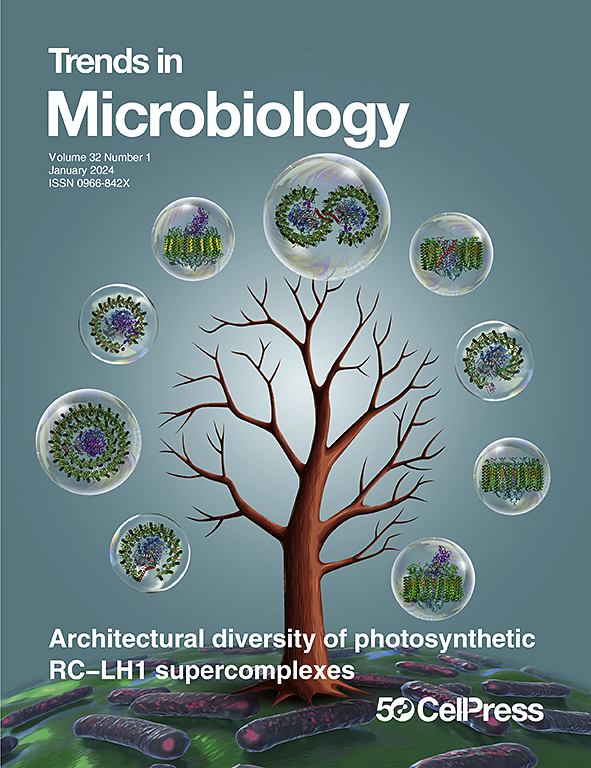人类-病原体-植物,一个新石器时代的进化故事。
IF 14
1区 生物学
Q1 BIOCHEMISTRY & MOLECULAR BIOLOGY
引用次数: 0
摘要
本论坛探讨的假设是,植物是普通沙门氏菌菌株进化的枢纽,可追溯到农业兴起的新石器时代。这表明人类、植物、动物和沙门氏菌之间存在着独特的相互联系,有可能推动农场病原体的进化。本文章由计算机程序翻译,如有差异,请以英文原文为准。
Human-pathogens and plants, a Neolithic evolutionary tale.
This forum explores the hypothesis that plants serve as a hub for the evolution of generalist Salmonella strains, and can be traced back to the Neolithic era when agriculture emerged. It suggests a unique interconnection among humans, plants, animals, and Salmonella, potentially driving the evolution of the pathogen on farms.
求助全文
通过发布文献求助,成功后即可免费获取论文全文。
去求助
来源期刊

Trends in Microbiology
生物-生化与分子生物学
CiteScore
25.30
自引率
0.60%
发文量
193
审稿时长
6-12 weeks
期刊介绍:
Trends in Microbiology serves as a comprehensive, multidisciplinary forum for discussing various aspects of microbiology, spanning cell biology, immunology, genetics, evolution, virology, bacteriology, protozoology, and mycology. In the rapidly evolving field of microbiology, technological advancements, especially in genome sequencing, impact prokaryote biology from pathogens to extremophiles, influencing developments in drugs, vaccines, and industrial enzyme research.
 求助内容:
求助内容: 应助结果提醒方式:
应助结果提醒方式:


